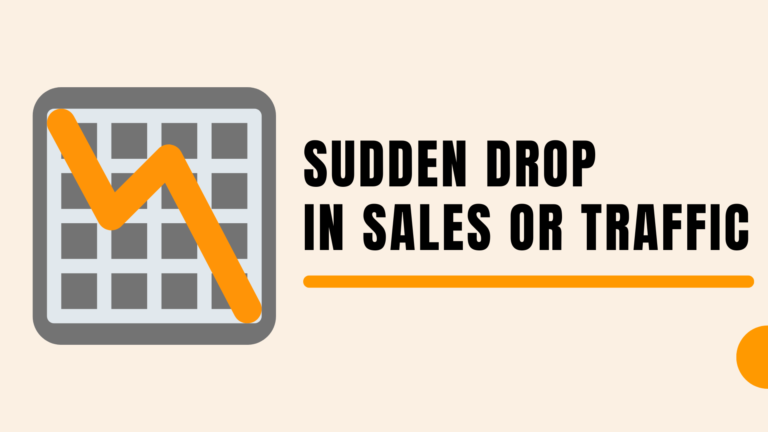Operating Amazon PPC campaigns without a clear structure is like navigating a ship with no clear destination; you may just find yourself moving forward, but you won’t know where you’re going. A clear, organized campaign structure is essential to controlling your budgets and bids, and improving your ad performance, visibility, and profitability.
What is the Amazon PPC Campaign Structure?
Amazon PPC campaign structure refers to how you organize your ads, including how you separate keywords, set bids, and allocate budgets within your account. An efficient structure typically includes three main components: campaigns, ad groups, and keywords. Each plays a unique role in influencing performance, helping you focus on both outcomes and profitability.
With well-planned campaigns, it becomes easier to make data-driven adjustments that enhance visibility and increase sales. The average Amazon PPC conversion rate is around 14%, highlighting the importance of a properly organized campaign in turning clicks into real purchases.
Key Elements of a Well-Organized Amazon PPC Campaign
A properly planned Amazon PPC campaign helps sellers achieve peak visibility, manage advertising costs, and improve their ROI. The key to success lies in establishing a clear hierarchy, starting with the campaign level and progressing to individual keywords.
The purpose of each layer is different, which allows advertisers to target the correct audience and track performance in detail. The main elements of a well-structured Amazon PPC campaign are outlined below.

Campaign Level
At the campaign level, the most important task is to define the general purpose of your campaign, whether it is to increase sales, raise product awareness, or introduce a new product. The campaigns must be focused so that each can be easily tracked and optimized.
Setting daily budgets, selecting the appropriate targeting type (Automatic or Manual), and grouping similar products can help improve ad performance and budget efficiency.
Ad Group Level
The ad group level categorizes the ads for each campaign. This is where you get to determine which products you want to promote and select the keywords or targeting methods to use.
One of the best practices is to group similar products in the same ad group. This keeps the keywords relevant to the product and improves the quality of the ads themselves. Correctly organized ad groups allow you to discover which groups of products perform the best, and distribute your spend accordingly.
Keyword Level
Keywords help to define when and where the ads will run. Maintaining the right balance between broad, phrase, and exact match types helps target potential buyers effectively. Search term reports should be checked regularly to remove underperforming keywords and maintain high-converting ones.
Keyword-level optimization can be a great way to improve your click-through and conversion rates, which have a direct effect on your campaign’s profitability.
Negative Keywords
One of the most significant tools for enhancing ad efficiency is the use of negative keywords. Removing irrelevant or underperforming search terms will save your ad budget and ensure that it targets only high-intent shoppers. By regularly updating your negative keyword list, you keep your campaign on track, enhance ACoS (Advertising Cost of Sales), and ultimately increase ROI in the long term.
How to Structure Amazon PPC Campaigns Step-by-Step
The following is a step-by-step approach to creating an optimized structure that delivers consistent results.

Step 1: Get Your Campaign Objectives
Before you jump in, make sure you know what you want to get out of it: sales, brand awareness, or product awareness. The type of campaign you choose (Sponsored Products, Sponsored Brands, or Sponsored Display) and the amount you spend on it will depend on your goals. Setting clear goals makes it easier to track progress and change plans as needed.
Step 2: Design Product-specific campaigns
Combine group products into similar features, margins, or target markets in the same campaign. This will ensure that your adverts are relevant and that monitoring of the budget becomes simple.
Assume that you are selling fitness equipment, then you must not apply the same campaigns to yoga mats and dumbbells, as they require different keywords. This helps you better track performance.
Step 3: Make Focused Ad Groups
Inside each campaign, organize your ads into ad groups that focus on one specific product variation or theme. Each ad group should contain closely related keywords and ASINs. This focused setup improves ad relevance and helps Amazon’s algorithm match your ads to the most accurate search terms.
Step 4: Choose and strategize on Keywords
To balance reach and precision, a mixture of general, phrase, and exact matches is to be applied. Carry out keyword research to identify the high-volume and low-competition ones. Moreover, continue upgrading your list of keywords based on the performance data to boost CTR (Click-Through Rate) and conversion rate.
Step 5: Identify Negative Keywords to avoid unnecessary expenditure
Negative keywords help remove irrelevant, non-converting searches. Review your search term reports periodically and add as negatives. The practice will guarantee that the campaign is effective by reducing the iCoS (Advertising Cost of Sales) and directing your advertisement to those with a high intent to purchase.
Step 6: Develop budget and bidding policy
You should have daily goals and a budget that corresponds to your goals- you can experiment with different bidding strategies such as dynamic bidding, fixed bids, and placement modifiers. Test small, monitor, and expand on what works. The controlled budget strategy will make you profitable and more visible in your advertisements.
Step 7: Monitor, analyze, and optimize on a regular basis
When it has been launched, monitor the measures at all times, such as CTR, conversion rate, and ACoS. With the help of Amazon Campaign Manager, it is possible to adjust bids, pause poorly performing keywords, and reallocate funds to more successful campaigns. Regular optimization will keep your PPC profitable and competitive.
Common Mistakes to Avoid
In order to design a successful and profitable Amazon PPC campaign, one should consider and avoid the following traps that tend to waste ad dollars and decrease the performance:
- Overlooking the type of keyword match, Broad match is one of the types of keywords applied by most sellers, which leads to irrelevant clicks and minimal conversions. Use a mix of fractional, phrase, and broad matching with the same degree of accuracy to increase the precision of targeting.
- Omission of negative keywords: This oversight will cause your adverts to appear in search results for irrelevant queries. In order to stay within your budget, make sure you update your negative keyword list.
- The campaign structure is poor: It tends to include many products or keywords in one campaign, making it hard to track and compromising performance insights. Campaigns should be organized according to category, and ad groups should be based on product variations.
Conclusion
The answer to maximizing ROI is the presence of a clear and well-organized Amazon PPC strategy. Make it the priority to sever the campaigns in accordance with the objectives, enhance the keywords, and polish bids regularly.
By continually tracking and making decisions based on data, your ads will reach the correct audience, minimize wasted expenditure, and increase the overall profitability.
FAQs
1. What should the perfect Amazon PPC campaign look like?
The best organization is in the form of a clear hierarchy: Campaigns to Ad Groups to Keywords. Every campaign must be targeted (sales, brand awareness, or product launch), and the ad groups should target one product or a closely related group of products.
2. In which intervals am I supposed to revise and optimise my Amazon PPC campaigns?
You have to track such important indicators as CTR, conversion rate, and ACoS at least once a week. Periodic reviews will enable you to put on hold underperforming keywords, change bids, and redeploy budgets in high-performing ads. The most important solution to staying profitable and competitive is constant improvement.
3. What is the significance of negative keywords in the Amazon PPC campaigns?
Negative keywords ensure that your advert does not appear on irrelevant search listings, allowing you to spend your money wisely and also target shoppers who have high purchasing intentions.








